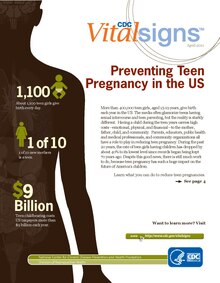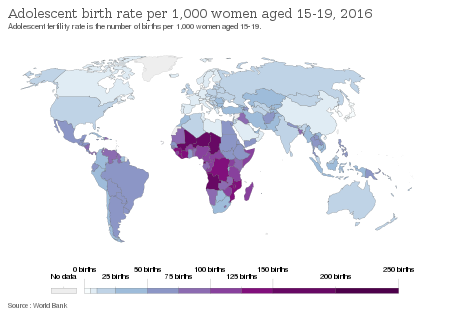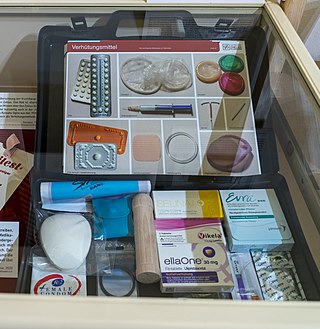
Sex education, also known as sexual education, sexualityeducation or sex ed, is the instruction of issues relating to human sexuality, including human sexual anatomy, sexual activity, sexual reproduction, safe sex, and birth control, sexual health, reproductive health, emotional relations and responsibilities, age of consent, and reproductive rights. Sex education that includes all of these issues is known as comprehensive sexuality education, and, especially in more socially conservative countries and parts of the United States, is often opposed to abstinence-only sex education, which only focuses on sexual abstinence. Sex education may be provided as part of school programs, public health campaigns, or by parents or caregivers. In some countries it is known as "Relationships and Sexual Health Education".

Teenage pregnancy, also known as adolescent pregnancy, is pregnancy in a female adolescent or young adult under the age of 20. Worldwide, pregnancy complications are the leading cause of death for women and girls 15 to 19 years old. The definition of teenage pregnancy includes those who are legally considered adults in their country. The WHO defines adolescence as the period between the ages of 10 and 19 years. Pregnancy can occur with sexual intercourse after the start of ovulation, which can happen before the first menstrual period (menarche). In healthy, well-nourished girls, the first period usually takes place between the ages of 12 and 13.

Family planning is the consideration of the number of children a person wishes to have, including the choice to have no children, and the age at which they wish to have them. Things that may play a role on family planning decisions include marital situation, career or work considerations, financial situations. If sexually active, family planning may involve the use of contraception and other techniques to control the timing of reproduction.

Premarital sex is sexual activity which is practiced by people before they are married. Premarital sex is considered a sin by a number of religions and also considered a moral issue which is taboo in many cultures. Since the Sexual Revolution of the 1960s, it has become accepted by certain liberal movements, especially in Western countries. A 2014 Pew study on global morality found that premarital sex was considered particularly unacceptable in "Muslim Majority Countries", such as Malaysia, Jordan and Pakistan, each having over 90% disapproval, while people in Western European countries were the most accepting, with Spain, Germany, and France expressing less than 10% disapproval.

Birth rate, also known as natality, is the total number of live human births per 1,000 population for a given period divided by the length of the period in years. The number of live births is normally taken from a universal registration system for births; population counts from a census, and estimation through specialized demographic techniques. The birth rate is used to calculate population growth. The estimated average population may be taken as the mid-year population.

Sexual and reproductive health (SRH) is a field of research, health care, and social activism that explores the health of an individual's reproductive system and sexual well-being during all stages of their life. Sexual and reproductive health is more commonly defined as sexual and reproductive health and rights, to encompass individual agency to make choices about their sexual and reproductive lives.
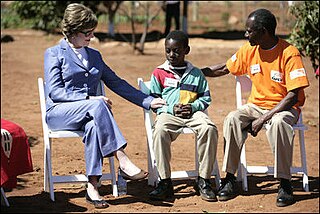
Abstinence-only sex education is a form of sex education that teaches not having sex outside of marriage. It often excludes other types of sexual and reproductive health education, such as birth control and safe sex. In contrast, comprehensive sex education covers the use of birth control and sexual abstinence.
Adolescent sexuality is a stage of human development in which adolescents experience and explore sexual feelings. Interest in sexuality intensifies during the onset of puberty, and sexuality is often a vital aspect of teenagers' lives. Sexual interest may be expressed in a number of ways, such as flirting, kissing, masturbation, or having sex with a partner. Sexual interest among adolescents, as among adults, can vary greatly, and is influenced by cultural norms and mores, sex education, as well as comprehensive sexuality education provided, sexual orientation, and social controls such as age-of-consent laws.
The sexuality of US adolescents includes their feelings, behaviors and development, and the place adolescent sexuality has in American society, including the response of the government, educators, parents, and other interested groups.
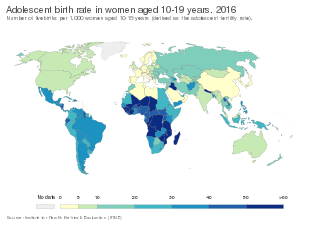
Industrialized and developing countries have distinctly different rates of teenage pregnancy. In Western countries such as the United States, Canada, Western Europe, Australia, and New Zealand, teen parents tend to be unmarried, and adolescent pregnancy is seen as a social issue.
Teenage pregnancy in the United Kingdom refers to the rate at which people under 20 fall pregnant in the United Kingdom. As of 2021, the rate of teenage conceptions in the United Kingdom was 5.226% percent of total conceptions, whereas 2.199% of all live births in the United Kingdom were to mothers under 20 years of age. The rate of teenage pregnancy is relatively high when compared with other developed countries; the only other Western countries with higher teenage pregnancy rates are the United States and New Zealand. A report in 2002 found that around half of all conceptions to under-18s were concentrated among the 30% most economically deprived population, with only 14% occurring among the 30% least deprived.

Teenage marriage is the union of two adolescents between the ages of 13 and 19. Many factors contribute to teenage marriage, such as love, teenage pregnancy, religion, security, wealth, family, peer pressure, arranged marriage, economic and/or political reasons, social advancement, and cultural reasons. Studies have shown that teenage married couples are often disadvantaged, may come from broken homes, may have little education, and work in low-status jobs in comparison with those that marry after adolescence.
Unintended pregnancies are pregnancies that are mistimed, unplanned or unwanted at the time of conception.

16 and Pregnant is an American reality television series that aired from June 11, 2009, to July 1, 2014, on the cable channel MTV. It followed the stories of pregnant teenage girls in high school dealing with the hardships of teenage pregnancy. Each episode featured a different teenage girl, with the episode typically beginning when she is 4+1⁄2 – 8 months into her pregnancy. The episode typically ends when the baby is a few months old. The series is produced in a documentary format, with an animation on notebook paper showing highlights during each episode preceding the commercial breaks. 16 and Pregnant has spawned five spin-off series: Teen Mom, Teen Mom 2, Teen Mom 3, Teen Mom: Young and Pregnant, and 16 and Recovering, which premiered on September 1, 2020.
In the United States, sex education is taught in two main forms: comprehensive sex education and abstinence-only as part of the Adolescent Family Life Act, or AFLA. Comprehensive sex education is also called abstinence-based, abstinence-plus, abstinence-plus-risk-reduction, and sexual risk reduction sex education. This approach covers abstinence as a choice option, but also informs adolescents about age of consent and the availability of contraception and techniques to avoid contraction of sexually transmitted infections. Every state within the U.S. has a mandated AIDS Education Program.
Both the Guttmacher Institute and the Centers for Disease Control and Prevention (CDC) regularly report abortion statistics in the United States. They use different methodologies, so they report somewhat different abortion rates, but they show similar trends. The Guttmacher Institute attempts to contact every abortion provider. The CDC relies on voluntary reporting of abortion data from the states and the District of Columbia. As of July 2022, the Guttmacher Institute had reported abortion data for the years 1973 through 2020 and the CDC had reported abortion data for the years 1970 through 2019.

Birth control in the United States is available in many forms. Some of the forms available at drugstores and some retail stores are male condoms, female condoms, sponges, spermicides, and over-the-counter emergency contraception. Forms available at pharmacies with a doctor's prescription or at doctor's offices are oral contraceptive pills, patches, vaginal rings, diaphragms, shots/injections, cervical caps, implantable rods, and intrauterine devices (IUDs). Sterilization procedures, including tubal ligations and vasectomies, are also performed.
Reproductive coercion is a collection of behaviors that interfere with decision-making related to reproductive health. These behaviors are meant to maintain power and control related to reproductive health by a current, former, or hopeful intimate or romantic partner, but they can also be perpetrated by parents or in-laws. Coercive behaviors infringe on individuals' reproductive rights and reduce their reproductive autonomy.
Abortion is a controversial topic in Nigeria. Abortion in Nigeria is governed by two laws that differ depending on geographical location. Northern Nigeria is governed by The Penal Code and Southern Nigeria is governed by The Criminal Code. The only legal way to have an abortion in Nigeria is if having the child is going to put the mother's life in danger. However, sex-selective abortion has long had acceptance in Nigeria.
Teenage pregnancy is a girl between the ages of 13 and 19 becoming pregnant. The term used in every day speech usually refers to girls who have not yet reached legal adulthood, which in Australia is anyone under the age of 18. At the national level, the teenage birth rate has declined in the last decade. The rate was about 16 babies per 1,000 women aged 15–19 years between 2011 and 2012 but this had fallen to 11.9 births per 1,000 women aged 15–19 in 2015, the lowest figure on record. Terminations can be performed up until the 12-week mark. About half of all teenage pregnancies are terminated in Australia.






